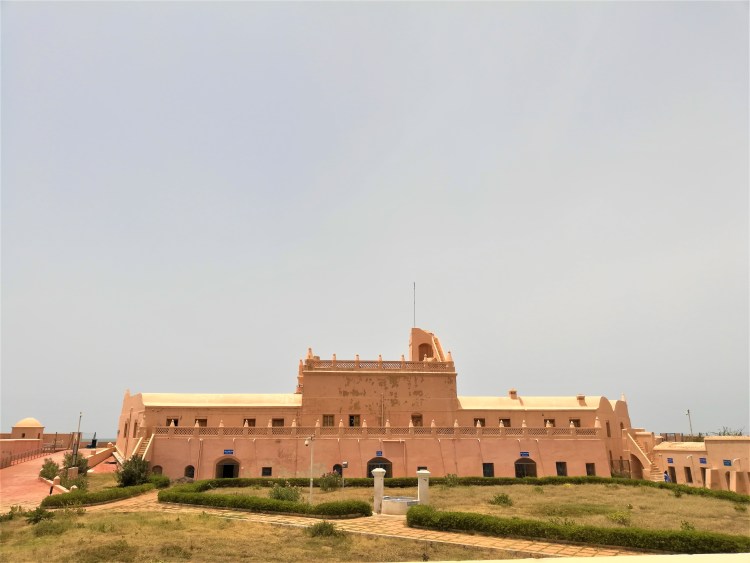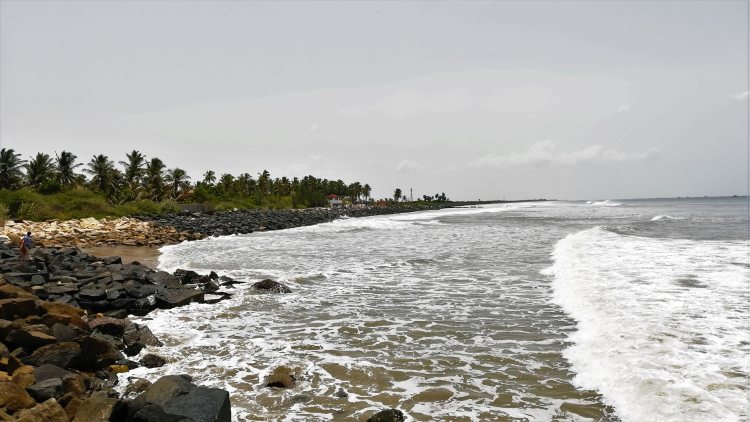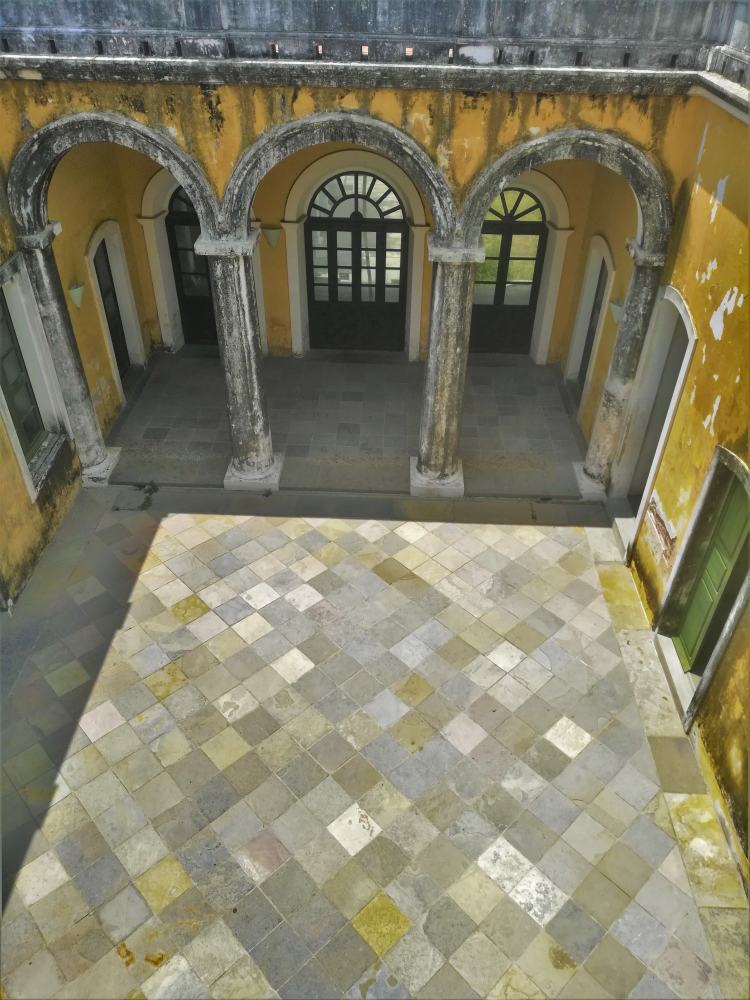On the shores of Bay of Bengal stands the small European fort subtly squeezed into the mainland along the shores. The Danes were not successful traders or at least in their Asiatic exploration but were one of the earliest to reach India. The Dansborg Fort at Tarangambadi stands testimony to their trade expeditions in India.
It was in the 1600’s when the words expedition and trade topped the charts of emperors. The Dutch and British were quite successful in their expedition which was a matter of envy among fellow Europeans. The Danes for their part under King Christian established the Danish company in 1618. He trusted the expedition with Admiral Ove Gjedde in an expedition which would take him 2 years and kill half his crew. They arrived in Ceylon in 1620 only to see their expedition fail. Crappe, another sailor had sailed on a freighter Øresund one month before the main fleet. Øresund had encountered Portuguese vessels off the Karaikkal coast and was sunk, with most of the crew killed or taken prisoner. The heads of two crew members were placed on spikes on the beach as a warning to the Dano-Norwegians. Crappe and 13 of the crew had escaped the wreck, making it to shore where they were captured by Indians and taken to the Nayak of Thanjavur. According to the treaty the Danes were given the village of Tarangambadi and the right to construct a fort in the area by Raghunatha Nayak in the land for an annual rent of INR. 3111.

An old painting of the Tarangambadi region and the Dansborg Fort (Source: Wikipedia)
After an initial success followed by several years of mismanagement leading solvency of the company only to be revived in the upcoming years and achieving stability under Asiatic East India company Danes had a difficult period handling their assets and company in India. The Danes exported Tea to their mainland only to be sold to the British. The English later found a way to skip the middleman and the Danish trade suffered. Later after a series of wars and the growing presence of British in India they had little chance but to secede the fort to The English.
The fort after all the years of flourishing trade followed by negligence and the Tsunami which probably destroyed it the most stands tall. This brought the Danish government back into the play as they felt the need to what stands as their second largest fort and a standing remanence if their rather unsuccessful expeditions. With the help of the Indian archaeology, they together restored the fort and also the settlement in the locality. The Tranquebar association was formed in 2001, by the Tamil Nadu State Archaeological department and the Danish Royal family. With the help of local artisans and Danish experts, the fort was restored with almost the same kind of material. Post Tsunami stones were laid along the shore to prevent soil erosion.

The Gateway to the Fort
The New Jerusalem Church and the Zion Church.
The New Jerusalem church waved at me from the left. The church was established in 17th Century by the Danes. The Zion church which was established earlier was reluctant to accept the local converts. Thus Barthomaus Ziegenbalg built this church to administer the local people for prayers. Protestant missionaries Bartholomaus Ziegenbalg and Heinrich Plutschua came to India in 1706 and established the Tranquebar Mission making it the first Protestant mission in the country. Ziegenbalg is credited for many achievements from translating The New Testament of the Bible into Tamil.

The New Jerusalem Church with the royal monogram of Frederick IV
Enter the main square
I then landed in the main square with the restored Governor building and a museum to the left and to the right stands the Dansborg Castle. Painted in Peach orange stood the Castle. The castle is built on two levels. And is covered with a 100 ft wall on either side. The main building houses which a display of the artifacts and the Dutch remains. The underground galleries were the main storerooms. Partly restored with a name board. The wall to the east consists of the water channel, store room, kitchen. Beer and Wine room, soldiers room and gunpowder room. The huge open space in the middle with a wall. The access to the top floor has been blocked for maintenance. The walk over the fort wall gives an aesthetic view of the area especially the ones near the shore.






At display inside the fort are Maps, jars, ships, cannons and notes of Danish history

The view of the main fort from the walls.




Interestingly the place was named as Tranquebar by the Danes meaning “the place of singing waves”. How could I miss the sea? The beach line is lined with rugged remains of earlier constructions ravaged by the waves. There were quite a few numbers of boats on the shoreline and few women selling sea shells to the visitors. And the fort is blessed with a grand view of the sea.

The shoreline along the fort. Tranquebar means "the place of singing waves"
A temple of history..
There is also a temple not far away from the fort. It turns out the temple is much older than the fort itself. The Masilamaninathar temple built in 1305 A.D by the Pallava kings now stands literally after repeated erosions over time. The temple looks in a broken state just on the verge with the idol overlooking the extent of the Bay of Bengal. This has been the state of two different structures both ancient one more than the other haplessly standing the vagaries of the sea.

The Masilamaninathar temple was hit badly by Tsunami. (Source: TamilNadu Tourism)
The governor’s bungalow built in 1784 stands facing the fort. They had restored the building and now this houses a museum of its past settlers. Also, nearby is the Danish-India maritime museum housing a display of Danish governors and kings. This has been restored to house the displays from a destroyed state.

The Governor Bungalow


Inside the governor Bungalow. Ziegenbalg a man of many firsts to his name
On the Admiral Street is the old printing press building which was one of the oldest printing presses in India
established in 1708.

A group of woman selling seashells to their customers.
The place still lacks decent stays except for one or two hotels. Though the locals have a few homestays they normally go unnoticed. It was difficult for me to find a good restaurant in the region. The place truly is a hidden gem housed serenely on the Coromandel coast. The Danes once walked the same roads with a mission of making money out of trade and for all the tea and spices they had traded of the shores they had left behind something sort of a gift to the people of Tarangambadi.
It was in the 1600’s when the words expedition and trade topped the charts of emperors. The Dutch and British were quite successful in their expedition which was a matter of envy among fellow Europeans. The Danes for their part under King Christian established the Danish company in 1618. He trusted the expedition with Admiral Ove Gjedde in an expedition which would take him 2 years and kill half his crew. They arrived in Ceylon in 1620 only to see their expedition fail. Crappe, another sailor had sailed on a freighter Øresund one month before the main fleet. Øresund had encountered Portuguese vessels off the Karaikkal coast and was sunk, with most of the crew killed or taken prisoner. The heads of two crew members were placed on spikes on the beach as a warning to the Dano-Norwegians. Crappe and 13 of the crew had escaped the wreck, making it to shore where they were captured by Indians and taken to the Nayak of Thanjavur. According to the treaty the Danes were given the village of Tarangambadi and the right to construct a fort in the area by Raghunatha Nayak in the land for an annual rent of INR. 3111.

An old painting of the Tarangambadi region and the Dansborg Fort (Source: Wikipedia)
After an initial success followed by several years of mismanagement leading solvency of the company only to be revived in the upcoming years and achieving stability under Asiatic East India company Danes had a difficult period handling their assets and company in India. The Danes exported Tea to their mainland only to be sold to the British. The English later found a way to skip the middleman and the Danish trade suffered. Later after a series of wars and the growing presence of British in India they had little chance but to secede the fort to The English.
The fort after all the years of flourishing trade followed by negligence and the Tsunami which probably destroyed it the most stands tall. This brought the Danish government back into the play as they felt the need to what stands as their second largest fort and a standing remanence if their rather unsuccessful expeditions. With the help of the Indian archaeology, they together restored the fort and also the settlement in the locality. The Tranquebar association was formed in 2001, by the Tamil Nadu State Archaeological department and the Danish Royal family. With the help of local artisans and Danish experts, the fort was restored with almost the same kind of material. Post Tsunami stones were laid along the shore to prevent soil erosion.

The Gateway to the Fort
Danish Delight
Tarangambadi mostly goes unnoticed for the location even for travelers. It looks like a quiet local village with only the road signs indicating the Fort which most of them might miss at first sight. A much similar sight walking through villages houses on both the sides and shops. A decolored white arch welcomed me to the Danish entrance. The main road which leads to the fort is named the “King’s Street”. The streets are named as the king's street, Queen's street, Admiral street. Most of the past buildings are along the King's street which also ends up at the fort.The New Jerusalem Church and the Zion Church.
The New Jerusalem church waved at me from the left. The church was established in 17th Century by the Danes. The Zion church which was established earlier was reluctant to accept the local converts. Thus Barthomaus Ziegenbalg built this church to administer the local people for prayers. Protestant missionaries Bartholomaus Ziegenbalg and Heinrich Plutschua came to India in 1706 and established the Tranquebar Mission making it the first Protestant mission in the country. Ziegenbalg is credited for many achievements from translating The New Testament of the Bible into Tamil.

The New Jerusalem Church with the royal monogram of Frederick IV
Enter the main square
I then landed in the main square with the restored Governor building and a museum to the left and to the right stands the Dansborg Castle. Painted in Peach orange stood the Castle. The castle is built on two levels. And is covered with a 100 ft wall on either side. The main building houses which a display of the artifacts and the Dutch remains. The underground galleries were the main storerooms. Partly restored with a name board. The wall to the east consists of the water channel, store room, kitchen. Beer and Wine room, soldiers room and gunpowder room. The huge open space in the middle with a wall. The access to the top floor has been blocked for maintenance. The walk over the fort wall gives an aesthetic view of the area especially the ones near the shore.






At display inside the fort are Maps, jars, ships, cannons and notes of Danish history

The view of the main fort from the walls.




Interestingly the place was named as Tranquebar by the Danes meaning “the place of singing waves”. How could I miss the sea? The beach line is lined with rugged remains of earlier constructions ravaged by the waves. There were quite a few numbers of boats on the shoreline and few women selling sea shells to the visitors. And the fort is blessed with a grand view of the sea.

The shoreline along the fort. Tranquebar means "the place of singing waves"
A temple of history..
There is also a temple not far away from the fort. It turns out the temple is much older than the fort itself. The Masilamaninathar temple built in 1305 A.D by the Pallava kings now stands literally after repeated erosions over time. The temple looks in a broken state just on the verge with the idol overlooking the extent of the Bay of Bengal. This has been the state of two different structures both ancient one more than the other haplessly standing the vagaries of the sea.

The Masilamaninathar temple was hit badly by Tsunami. (Source: TamilNadu Tourism)
The governor’s bungalow built in 1784 stands facing the fort. They had restored the building and now this houses a museum of its past settlers. Also, nearby is the Danish-India maritime museum housing a display of Danish governors and kings. This has been restored to house the displays from a destroyed state.

The Governor Bungalow


Inside the governor Bungalow. Ziegenbalg a man of many firsts to his name
On the Admiral Street is the old printing press building which was one of the oldest printing presses in India
established in 1708.

A group of woman selling seashells to their customers.
The place still lacks decent stays except for one or two hotels. Though the locals have a few homestays they normally go unnoticed. It was difficult for me to find a good restaurant in the region. The place truly is a hidden gem housed serenely on the Coromandel coast. The Danes once walked the same roads with a mission of making money out of trade and for all the tea and spices they had traded of the shores they had left behind something sort of a gift to the people of Tarangambadi.








